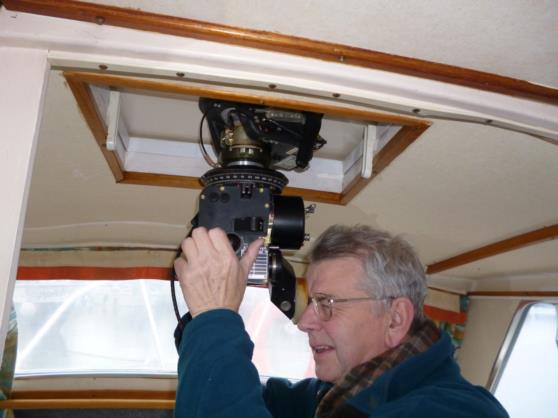
NavList:
A Community Devoted to the Preservation and Practice of Celestial Navigation and Other Methods of Traditional Wayfinding
From: David Pike
Date: 2015 Jun 2, 10:37 -0700
Gary you said: Assuming that the british was similar to the U.S. mount the navigator had several ways to set it up so as to be able to check the aircraft's heading, see attached.
I’ve just looked though my KSH-0203/RAF Mk1 sextant (the one used in the Hermes), and although it’s pretty gummed up in all respects, the first thing I noticed was the magnification. It’s like looking though binoculars and must certainly be X4 so little wonder the field of view is only 7°. As the aircraft heading would appear to have been incorrect by 27° initially and 54° later, it’s not surprising that the navigator had difficulty finding the correct star. The other thing I noticed is that my azimuth ring is missing, so I can’t be certain, but there appears to be no locking lever. It looks like the ring was just a stiff fit on the periscope cylinder. The ring was marked from 0-359°. It’s not clear from the maker’s notes, but I would guess that the ring was moved until the azimuth of the body was against the lubber line on the sextant and then the sextant and ring were rotated until the aircraft heading was against the lubber line on the mounting. This sextant was electro-mechanically operated, and without a working model to experiment with, seems quite difficult to understand the operating instructions.
Its successor, the RAF MK2 went back to RAF MKIX principles, including clockwork, and seems much simpler to understand and operate. The magnification was only X2 with a FOV of 12°. You’ll notice in the photos below that there’s a lever switch on one side of the sextant just below the azimuth ring. ‘Up’ locked the azimuth ring to the mounting and ‘down’ locked the azimuth ring to the sextant.
This is the way I was taught to set up and the way I taught two years worth of nav students at one course per month. 1. Set the body’s altitude. 2. With locking switch up, move sextant until the sextant lubber line is against the correct azimuth. Then move the switch down to lock the azimuth. 3. Swing the sextant until the aircraft heading is against the heading lubber line on the mounting. 4. Look through the eyepiece, and the body should be very close to the centre of the eyepiece. Make adjustments as necessary. 5. At mid-time during the sight, flick the locking switch up. The heading is now locked against the heading lubber line. 6. After the sight, read off the heading at your leisure. Compare this with the compass heading noted at mid-time by another member of the crew. I’m assuming they did the same with the KSH 0203, but the absence of a locking switch must have made it harder. Dave








